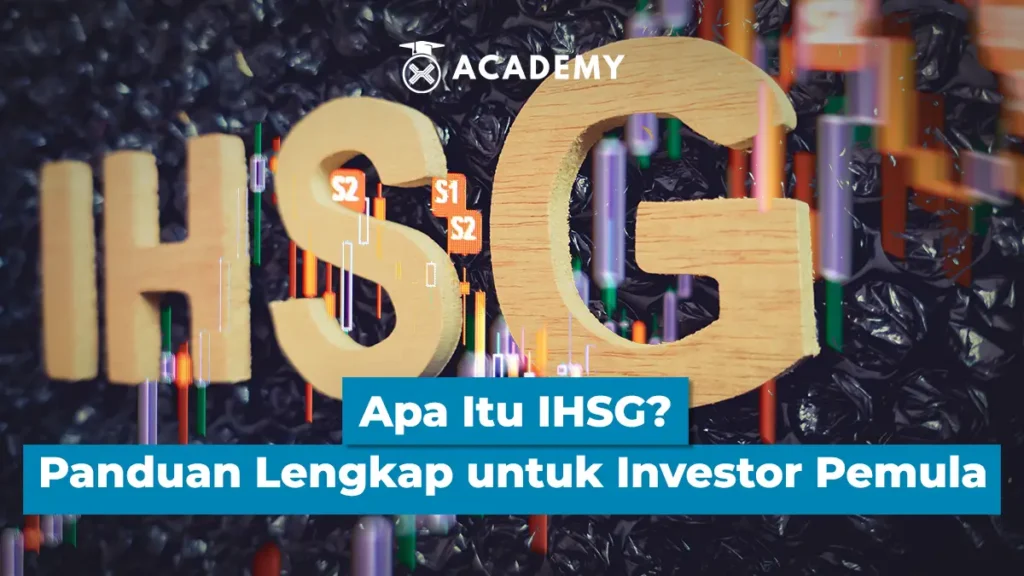Before starting to invest in stocks and mutual funds, understanding the Indonesia Stock Exchange Composite Index (IHSG) is an important step.
IHSG is one of the key indicators frequently used by investors in Indonesia to assess the overall performance of the stock market.
This index reflects the price movements of many stocks listed on the Indonesia Stock Exchange, providing a general picture of market conditions. Having adequate financial knowledge is crucial in this regard.
Before deciding to invest in the capital market, understanding basic concepts like IHSG and the factors influencing its movements will help investors make better decisions and avoid unnecessary risks.
Read Also: Top 7 American Blue Chip Stocks with the Largest Dividends
What is IHSG and Why is it Important?

The Indonesia Stock Exchange Composite Index (IHSG) reflects the overall performance of all stocks listed on the Indonesia Stock Exchange (IDX). IHSG serves as a primary reference for investors to monitor stock price movements in the Indonesian stock market.
Each movement of the IHSG represents the price fluctuations of various stocks on the IDX, giving investors a general overview of the market’s condition, whether it is rising or falling.Essentially, understanding the IHSG is crucial for investors in making sound investment decisions.
By following IHSG developments, investors can assess the overall market situation, identify ongoing trends, and evaluate risks before making transactions.This helps investors formulate wiser investment strategies, whether for the short or long term.
Read More: U.S. stock market trading hours in Indonesian time.
History of IHSG
Here is an overview of the origins and development of the Indonesia Stock Exchange Composite Index (IHSG) over time:
The Beginnings of IHSG
IHSG was first introduced to the public on April 1, 1983, as the primary indicator for measuring the performance of the Jakarta Stock Exchange.
The calculation of IHSG was based on August 10, 1982, when the IHSG was given a base value of 100, with only 13 stocks listed on the exchange at the time.
Development of IHSG Over Time
The development of IHSG reflects the dynamics of Indonesia’s economy and the growing participation of investors in the capital market.
Since its introduction in 1983, IHSG has seen significant growth as the number of listed companies on the Indonesia Stock Exchange (IDX) has increased.
Initially, IHSG only covered 13 stocks, but today the number of listed companies has reached hundreds, reflecting the growing interest of companies to go public and investors looking to invest in stocks.
IHSG’s growth is also influenced by various economic and political factors, both domestic and global. Macroeconomic conditions such as inflation, interest rates, and the rupiah exchange rate impact IHSG movements.
Functions of IHSG for Investors
IHSG is a collection of stock prices that is useful for investors or shareholders. Here are four key functions of IHSG:
Estimating Returns
The first function of IHSG is to estimate the average return on an investment portfolio.
Monitoring Economic Growth
IHSG can also be used to monitor a country’s economic growth. While other factors are needed to evaluate the economic condition, IHSG remains an important component.
Increased domestic investment boosts capital, which generates corporate tax revenue. This tax is used by the government to implement policies that support public welfare.
Stock Market Movement Indicator
IHSG serves as an indicator of capital market movements. If IHSG is trending upward, it indicates that stock prices in the capital market are also rising.
Conversely, if IHSG declines, stock prices are likely also falling. However, keep in mind that IHSG reflects the average, so individual stocks within the index may vary.
Read More: Here Are 5 American Stocks with the Highest Dividends, Must Check Them Out!
Measuring Portfolio Performance
Lastly, IHSG helps measure portfolio performance. For example, if IHSG increases by 200% in 10 years but your portfolio’s performance is below that, it may be necessary to reassess your investment strategy for better results.
Key Terms in the Jakarta Composite Index (IHSG)

The Jakarta Composite Index (IHSG) is an index, and with that comes various related terms. Several key terms need to be understood in order to effectively navigate investing in the capital market. Here’s an overview.
Portfolio
In the context of IHSG, a portfolio refers to a collection of investment assets, such as stocks, owned by an individual or company.
Fluctuation
Fluctuation refers to the movement of stock prices, either rising or falling. These price changes are influenced by various market conditions and external factors. Fluctuations are normal and something investors need to monitor.
Bubble
The term “bubble” describes a rapid and often irrational rise in stock prices that exceeds market value. This phenomenon is usually caused by unforeseen factors.
Buyback
A buyback occurs when a company repurchases its shares from shareholders.
Capital Gain/Loss
Capital gain refers to the profit investors (either individuals or companies) earn from selling a stock at a higher price than its purchase price. Conversely, capital loss occurs when a stock is sold for less than its purchase price.
Cut Loss and Hold
Cut loss happens when an investor decides to sell a stock to prevent further losses. “Hold” is the decision to retain a stock with the hope of gaining future profit.
Conclusion
That concludes the insightful discussion on “What is IHSG? A Complete Guide for Beginner Investors,” which you can read in full at the INDODAX Academy.
In summary, the IHSG, or Jakarta Composite Index, is the main indicator reflecting the price movement of all stocks listed on the Indonesia Stock Exchange (IDX). As a benchmark of the Indonesian stock market’s performance, the IHSG helps investors monitor market trends and make informed investment decisions.
The index covers various industry sectors, providing a broad view of Indonesia’s economic and stock market conditions.
For beginner investors, the IHSG is crucial as it helps them understand the overall market trends, not just the movement of individual stocks. By tracking the IHSG, investors can assess whether the stock market, in general, is strengthening or weakening.
Additionally, as an investment tool, the IHSG is often used as a reference when selecting investment products like equity mutual funds.
Thus, understanding the IHSG is an essential first step for anyone looking to invest in the Indonesian stock market, as it provides a comprehensive picture of market dynamics.
As additional information, INDODAX will soon introduce a new investment option featuring U.S. stocks. In addition to investing in crypto assets, you can now manage over 50 U.S. stocks through one INDODAX account, all within one app.
FAQ: Common Questions about IHSG
1. What is IHSG?
IHSG (Indeks Harga Saham Gabungan) is the Composite Stock Price Index that measures the price movement of stocks on the Indonesia Stock Exchange.
2.How is IHSG calculated?
IHSG is calculated based on the average stock prices of all listed companies on the Indonesia Stock Exchange.
3.Why is IHSG important for investors?
IHSG serves as a key indicator for assessing the overall condition of the stock market and helps investors make informed investment decisions.
4.What factors influence IHSG?
Factors that affect IHSG include economic conditions, market sentiment, and political and social stability.
5.What is the difference between IHSG and other stock indices?
IHSG includes all stocks listed on the Indonesia Stock Exchange, whereas other indices may only cover certain stocks or specific sectors.





 Polkadot 9.23%
Polkadot 9.23%
 BNB 0.57%
BNB 0.57%
 Solana 4.89%
Solana 4.89%
 Ethereum 2.37%
Ethereum 2.37%
 Cardano 1.22%
Cardano 1.22%
 Polygon Ecosystem Token 2.17%
Polygon Ecosystem Token 2.17%
 Tron 2.83%
Tron 2.83%
 Market
Market


